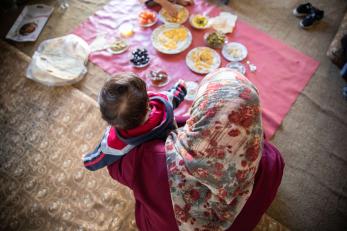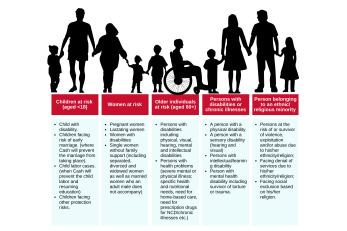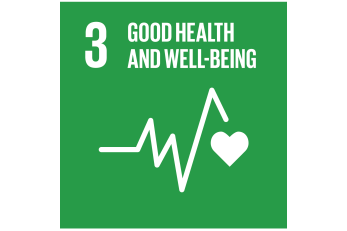RYSE: How Cash for Protection improves the health of many participants

Jordan has been a generous and crucial provider of safety and security and is commonly seen as a refuge from crisis, hosting the second-highest share of refugees per capita in the world. More than 760,000 refugees are registered with UNHCR, predominantly from Syria, with large groups from Iraq, Yemen, Sudan, and Somalia. 83% reside in cities outside refugee camps.
Eleven years into the Syrian crisis, Jordan’s society, economy, and infrastructure have been put under immense pressure in all sectors, including the labor market, education, health, housing, water, and electricity supply. In addition, refugees face increasing protection risks as their savings, assets, and resources are long exhausted. Thus, it is crucial to keep providing protection and assistance to refugees and asylum seekers, as well as to Jordanian communities affected by the refugee influx.
Mercy Corps and the Resilient Youth, Socially and Economically Empowered (RYSE) project
Our mission at Mercy Corps is to alleviate suffering, poverty, and oppression by helping build secure, productive, and just communities. Through its Resilient Youth, Socially and Economically Empowered (RYSE) project, Mercy Corps works to help many households find their way out of poverty.
RYSE project aims to empower displaced and conflict-affected youth to become the much-needed positive change agents in a region marred by war and political instability. The project is implemented by the Danish Refugee Council in partnership with Generations for Peace, INJAZ, Jordan River Foundation, and Mercy Corps. It is funded by the Novo Nordisk Foundation.
RYSE partners run a Graduation Approach program targeting households with youth between the ages of 18 – 30. With the help of the RYSE Graduation Approach, poor and vulnerable households can and will be equipped to do more than just cope. The interventions undertaken as part of this project were designed specifically to build the participants' skill sets, asset base, confidence, and social capital.
RYSE’s cash assistance
Through RYSE, participating households receive cash assistance (Consumption Support) to alleviate general socioeconomic vulnerabilities, and cover a household's short-term needs and close income gaps. Protection risks, on the other hand, are not an explicit or direct goal of Consumption Support.
To address the various protection needs, RYSE project includes a Cash for Protection component, which is an intervention in which cash assistance is used as a modality to address individual or household-level protection needs, with any family experiencing unusual and threatening circumstances, or those exposed to specific protection risks or rights violations, eligible to receive up to 440 JOD as one-time support. In this article, we'll go further into the Cash for Protection component and cover some specific cases.
The Cash for Protection
The RYSE Graduation Approach is built on four pillars: livelihood promotion, social protection, financial inclusion, and social empowerment, with frequent home mentoring as a cross-cutting component.
The social protection pillar in particular entails providing project participants with immediate relief and basic needs; hence, RYSE established the Cash for Protection program to accomplish such protection results. Cash for Protection is utilized in instances when a person or family is at risk of immediate harm, as well as when people or households confront protection concerns that have a negative impact on well-being but are not necessarily time-limited. Cash for Protection may be both a responsive and a remedial action, aiming to avoid, reduce, or mitigate exposure to protection risks, or to limit the impact of violations on victims.
In addition, cases that may face protection risks as a consequence of a health crisis (including mental health) are considered eligible, making sure none of the necessary medical treatment or care is covered by organizations that provide medical assistance.
The provision of Cash for Protection
The provision of Cash for Protection is not intended to address generic socio-economic vulnerabilities. Rather, it is driven by a causal link between a clearly identified protection concern and the analysis of how the cash assistance provided will produce a protection outcome by preventing, reducing or mitigating the risks identified.

The benefited cases in Ajloun and Mafraq
During the project period up to the writing of this article, fifteen cases received Cash for Protection through Mercy Corps' RYSE, with eight of them experiencing health issues. In this article, we will focus on four of the benefitted cases and how Mercy Corps and Cash for Protection helped them improve their overall health.
The four cases' most important challenges were limited access to healthcare, inadequate nutrition, and poor living conditions.
Case one
In one of Mafraq’s households, three male adults were affected by ocular issues. Due to the family's terrible financial situation, they are unable to get their children medical care as they rely only on food coupons as a source of income.
With the help of the Cash for Protection, one of the sons who participated as a youth member in the project was able to see an ophthalmologist and obtain a report explaining his illness. The cash he received covered the cost of check ups and he bought new glasses, which greatly improved his eyesight for the time being.
However, the doctor has recommended that he undergo corneal surgery on both eyes, which would cost the family around 2,000 JOD.
Case two
In yet another household in Mafraq, the mother was suffering from gallbladder disease that required emergency surgery. She had regular, severe seizures, which disrupted her daily routine and made her feel uncaring and uneasy about her responsibilities to her children and family.
Since the family's breadwinner has intermittent employment (day-worker), the family of six should have been able to eke out an existence on an average of 250 JOD each month, leaving the mother with little room to save up money for a much-needed surgery.
After receiving the Cash for Protection, the mother had gallbladder removal surgery, and received the needed treatments and checkups. She no longer suffered from the constant pain associated with gallbladder issues, had a greater sense of psychological stability, and was able to resume her previous level of physical activity, which marked a significant improvement in her health and restored her active daily functioning level.
Case three
A family of five in Mafraq, including a newborn daughter, is living in terrible circumstances in a house with just two rooms, a toilet, and no heating. A broken window and several worn-out mattresses and carpets worsened the situation.
The mother had been working as a cleaner before she became pregnant, then she quit to care for her newborn, putting her in even more financial difficulty. The mother is the primary breadwinner for the family. After marrying again, her husband lost contact with her and his children.
Prior to participating in the RYSE project, the mother's health was declining; she was too weak to breastfeed her baby girl or even feed her formula milk! Her other three girls had to rely on neighbors for food on an irregular basis. As a result, the family's overall health deteriorated.
With the help of the Cash for Protection, provided by the project, the mother was able to pay off all her accumulated debts from house rent and other bills, fixed the broken window and bought new mattresses and carpets, in addition to buying vitamins and milk for her and her baby.
The positive impact on the family's well-being was noticed in the mother's health, as her skin color brightened and she gained weight. The newborn's health and weight also increased significantly.
The mother's success in improving certain basic conditions was evident in the pleasant emotions that filled the house, as well as her enthusiasm for the start of her home-based business.
Case four
In Ajloun, a family of five, participating in the RYSE program, shares a humid, small, and poorly ventilated two rooms in the basement. The family's situation was extremely challenging due to the lack of a constant source of income. The youth member is the main breadwinner for the family whose main source of income is the assistance they receive and his part-time work.
The family's health situation is also difficult, since the head of the family suffers from diabetes and high potassium levels, which negatively impact his kidneys, eyes, and sometimes his breathing. Furthermore, the youth member has a nasal septum deviation, sinusitis, and nasal turbinate hypertrophy, all of which have a significant impact on his quality of life and can put him into a coma sometimes.
The Cash for Protection the family received allowed them to buy a vaporizer for the youth member, and a package of medications that the family primarily needed to improve their terrible health condition. As a consequence, the family was able to meet their necessities, and provide needed medications that helped in reducing illnesses the family had previously suffered.
On the other hand, the family received several training sessions, including financial literacy, which trained them how to effectively manage their financial expenses. The family also attended stress management training that helped them in overcoming their tension and anxiety.

Given that the Graduation Approach targets refugees and marginalized individuals with low incomes and living below the poverty line, the majority of them have limited access to healthcare owing to high costs and lengthy wait periods to visit a doctor or undergo surgery.
The aforementioned four cases demonstrate how growing economic opportunities have benefited families, especially those with diseased members. The financial assistance provided to participating families considerably helped them in overcoming some of these challenges and getting the necessary treatment in a shorter period of time.
It’s worth mentioning that in addition to these cases and those who benefited from Cash for Protection, there were a number of individuals with health problems who didn’t meet the Cash for Protection criteria, such as those with chronic diseases and cancer patients. Despite their low socioeconomic status and poor health, these individuals were not at risk of experiencing any kind of abuse, exploitation, or violence.
In humanitarian settings, access to health care is strongly associated with social protection and is essential to meeting sustainable development goals (SDG 3). Therefore, Mercy Corps believes it's crucial to give this group greater attention and suggests that, for future projects, the criteria be more comprehensive to cover such cases, particularly if there are no other means to support them.